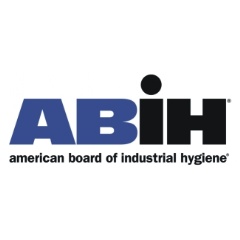Construction Companies Look to CIHs as New Respirable Crystalline Silica Standard Enforcement Approaches
The American Board of Industrial Hygiene® (ABIH®) reminds workers and industry of the need to address occupational exposure risks to known hazards.
The new standard for the construction industry will have far-reaching effects as OSHA currently estimates that more than 840,000 construction workers are exposed to silica levels that exceed the new permissible exposure limit.
On September 23rd, the Occupational Safety and Health Administration (OSHA) is scheduled to begin enforcement of the new respirable crystalline silica standard for the construction industry. These actions are part of the agency’s final rule that has two standards, one for Construction and one for General Industry and Maritime.
According to OSHA, this final rule is designed to save over 600 lives and prevent more than 900 new cases of silicosis each year, once its effects are fully realized. The agency estimates that 2.3 million workers are exposed to respirable crystalline silica in their workplaces. This includes 2 million construction workers who drill, cut, crush or grind silica-containing materials such as concrete and stone, and 300,000 workers in general industry operations such as brick manufacturing, foundries and hydraulic fracturing.
Key provisions of the new rule:
- Reduce the permissible exposure limit (PEL) for respirable crystalline silica to 50 micrograms per cubic meter of air, averaged over an 8-hour shift.
- Require employers to use engineering controls (such as water or ventilation) to limit worker exposure to the PEL; provide respirators when engineering controls cannot adequately limit exposure; limit worker access to high exposure areas; develop a written exposure control plan; and train workers on silica risks and how to limit exposures.
- Provide medical exams to monitor highly exposed workers and give them information about their lung health.
“In addition to helping to prevent new cases of silicosis, lung cancer, chronic obstructive pulmonary disease (COPD), and kidney disease, OSHA projects the final rule to provide net annual benefits of about $7.7 billion,” said David Roskelley, CIH® and Chair of ABIH®. “The new standard for the construction industry will have far-reaching effects as OSHA currently estimates that more than 840,000 construction workers are exposed to silica levels that exceed the new permissible exposure limit.”
On the frontlines helping to protect workers from respirable crystalline silica and other airborne exposure risks are Certified Industrial Hygienists. CIHs are uniquely qualified to identify and address respirable hazards in the workplace. This not only protects workers, but also helps to keep companies and institutions in regulatory compliance.
To learn more about the American Board of Industrial Hygiene®, Certified Industrial Hygienist® credential or to locate a CIH® to perform industrial hygiene services, please visit www.ABIH.org, email abih@ABIH.org or call (517) 321-2638.
About the American Board of Industrial Hygiene ®
Since 1960, ABIH®, a not-for-profit corporation, has been the world’s largest organization for certifying professionals in the practice of industrial hygiene. ABIH® is the premier credentialing body responsible for ensuring high-quality certification including education, experience, examination, certification maintenance and ethics enforcement. Currently, more than 6900 people in 32 countries are certified to use the CIH® credential.
( Press Release Image: https://photos.webwire.com/prmedia/12710/211877/211877-1.jpg )
WebWireID211877
- Contact Information
- Paul Cochrane
- President
- Cochrane & Associates, LLC
- Contact via E-mail
This news content may be integrated into any legitimate news gathering and publishing effort. Linking is permitted.
News Release Distribution and Press Release Distribution Services Provided by WebWire.
